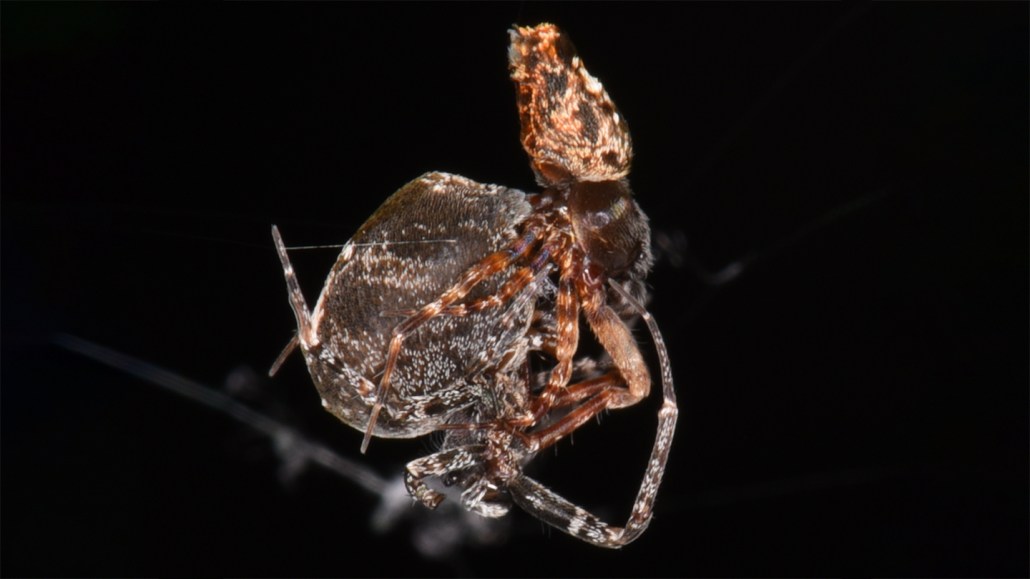These are our favorite animal stories of 2022
Skydiving salamanders and spiders dodging postcoital death are among the critters that most impressed us

After mating, a male Philoponella prominens orb weaver spider (reddish brown) will use its front legs to catapult backward and escape becoming lunch for the female (dark brown).
S. Zhang
- More than 2 years ago
From spiders that catapult their way to safety to sea sponges that sneeze themselves clean, here are the creature features that most impressed us in 2022.
Fishing fox
Pics or it didn’t happen. In the first recorded instance of a red fox fishing, a team from Spain filmed a red fox (Vulpes vulpes) catching 10 carp over a couple hours (SN: 11/5/22, p. 4). In 1991, a researcher reported arctic foxes in Greenland fishing. Foxes are only the second type of canid — wolves can do it too — that are known to fish for a feast.
Skydiving salamander
Flying squirrels, yes, but a skydiving salamander? This bold amphibian, native to northwestern California, can jump and glide among the tops of towering redwood trees. By extending its front and hind legs like a skydiver, the wandering salamander (Aneides vagrans) can control and adjust its speed and direction while in the air (SN: 6/18/22, p. 12).
Crafty cockatoos
In an interspecies battle for the ages, people in Sydney have had to up their defenses to stop cockatoos from rifling through outdoor trash bins (SN: 10/8/22 & 10/22/22, p. 10). The birds have learned to push bricks off the bin covers using brute force, while sneakers jammed through a bin’s handles are a better deterrent. But these trash thieves may eventually find a way around that blockade too.
Spring-to-safety spiders
Philoponella prominens males perform a death-defying stunt to keep from being eaten by a mate after sex. The orb weaver uses hydraulic pressure within its leg joints to launch nearly 90 centimeters per second to safety (SN Online: 4/25/22).
Joyriding goldfish
Teach a fish to drive a motorized fish tank and it will drive wherever it wants. Goldfish taught to drive showed they could navigate outside their natural environment and reach a target (SN: 2/12/22, p. 4). Maybe one day these cruising fish will boldly go where no fish has gone before.
I am excited to share a new study led by Shachar Givon & @MatanSamina w/ Ohad Ben Shahar: Goldfish can learn to navigate a small robotic vehicle on land. We trained goldfish to drive a wheeled platform that reacts to the fish’s movement (https://t.co/ZR59Hu9sib). pic.twitter.com/J5BkuGlZ34
— Ronen Segev (@ronen_segev) January 3, 2022
Snotty, sneezy sea sponges
These creatures take self-care to the next level. Sponges are filter feeders, sucking up water through their pores to get nutrients. But when unwanted junk comes in, an Aplysina archeri tube sponge traps the particles in mucus, then expels it in one slow-motion sneeze (SN: 9/10/22, p. 4). The Caribbean sponges are constantly oozing mucus like a child with a runny nose. Looks like someone could use a tissue.





